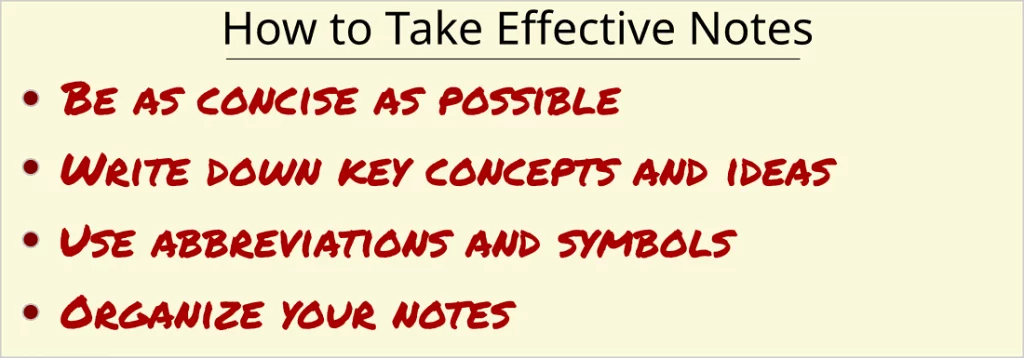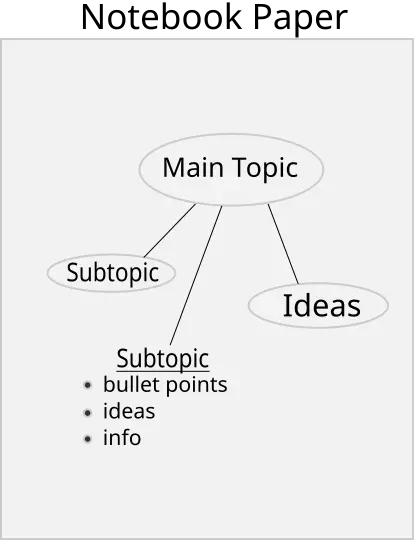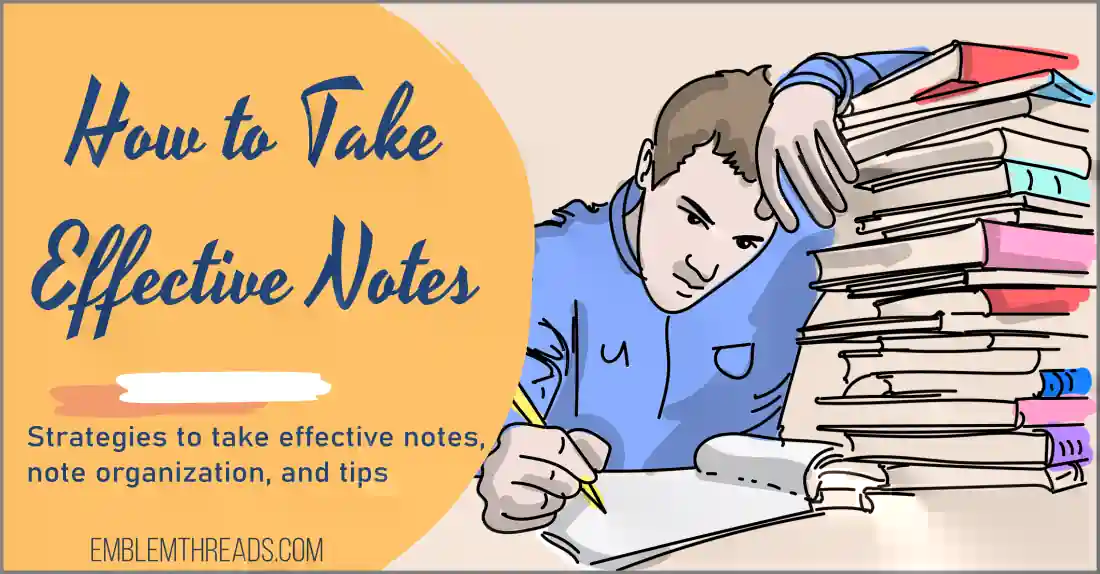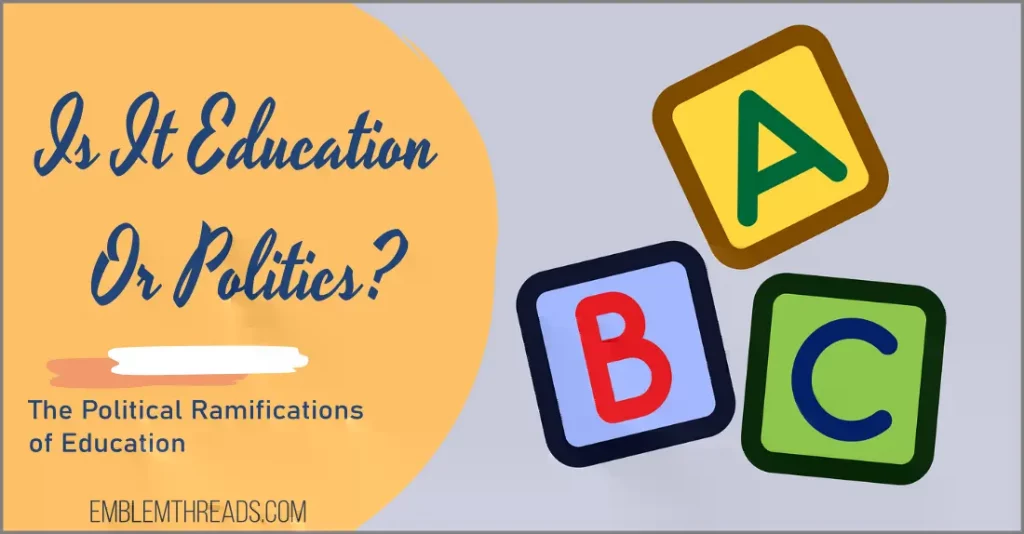Do you wish that you could take better notes in class? Are your notes cluttered and hard to follow?
Many people find it difficult to take effective notes but this is a skill that can be learned.
In this blog post, we will discuss strategies to take effective notes, note organization, how to be a good note taker, and tips for improving your note taking skills. Follow these tips and you’ll be on your way to becoming an effective note taker in no time.
Also be sure to check out: Online Learning vs Classroom Learning | New Solutions
How to take effective notes
The first step to taking effective notes is finding a note-taking method that works for you. Some people prefer to take notes by hand, while others prefer to type on their laptops. There is no right or wrong way to take notes, so experiment with different methods until you find one that works best for you.
In general, though, there are a few things you should keep in mind when taking notes:
1. Be as concise as possible
When taking notes, it’s important to be brief and to the point. This will help you stay focused and will make it easier to review your notes later on.
2. Write down key concepts and ideas
Don’t try to write down everything that the teacher says verbatim – this will just overwhelm you and make your notes difficult to read. Instead, focus on writing down the key concepts and ideas that are being discussed in class.
3. Use abbreviations and symbols
Abbreviations can help you save time when taking notes, so don’t be afraid to use them. Likewise, symbols can also be helpful for quickly jotting down ideas (e.g., using a star to denote important points).
4. Organize your notes
As you’re taking notes, be sure to organize them in a way that makes sense to you. This could mean grouping related concepts together, labeling sections with headings, or highlighting key points.

Once you have a method for taking notes that works for you, the next step is to actually start taking them. Make it a habit to take notes during every class, and review them regularly so that you can keep the information fresh in your mind.
Best way to take notes
Let’s talk about note-taking techniques that help you take better notes.
There are several note taking methods, but the best one for you depends on your learning style, the subject matter, and your personal preferences.
Here are a few popular note taking methods to try:
1. The Outlining Method
This method involves breaking down the information into smaller, more manageable pieces. You can do this by creating an outline of the material, using bullet points, or by writing summaries. This is a very common method and it can be helpful for almost any subject.
Advantages:
The advantages of the Outlining Method are that it’s easy to follow and it forces you to condense the information, which helps you better understand and remember the material.
2. The Cornell Method
This method involves dividing your page into three sections: notes, cues, and summary.
The notes section is for writing down key concepts, the cues section is for jotting down questions or ideas that you want to come back to later, and the summary section is for writing a brief summary of the material.
Advantages:
The advantages of the Cornell Method are that it forces you to process the information as you’re taking notes, and it provides a built-in review system.
Think of it as a way to organize your thoughts and ideas so that you can easily review them later on.

3. The Mapping Method
This method involves drawing a visual representation of the information, such as a mind map or concept map. It will look something like writing your idea in the center of the page, then drawing lines out from that point and writing related ideas on those lines.
Advantages:
The mapping method is a great way to visually represent the information and see the connections between different concepts. It can also help you remember information better because you’re using both your visual and verbal processing systems.
How Do You Use It?
The best way to use the Mapping Method is to start with a blank page and write down the main idea in the center. Then, draw lines out from that point and write related ideas on those lines.
You can also use colors, symbols, and images to help you remember the information better.
This method is especially helpful for visual learners or for subjects that involve a lot of complex information.

Also Read: What Is E-Learning
Other methods exist, but these are some of the most popular. Experiment with different methods until you find one that works best for you and the material you’re working with.
Are there specific note taking tips for high school students?
High school students can benefit from using the same note taking methods described above. However, there are a few things that they should keep in mind.
First, high school students should make sure that they’re taking notes in a way that helps them understand and remember the material. This means finding a method that works for their learning style and using it consistently.
Second, high school students should focus on taking quality notes rather than quantity. This means writing down key concepts and ideas rather than trying to transcribe everything the teacher says.
Finally, high school students should review their notes regularly. This will help them retain the information and be better prepared for tests and quizzes.
“Tell me and I forget. Teach me and I remember. Involve me and I learn.”
– Benjamin Franklin
Strategies for note taking
So now, let’s get into the nitty-gritty of how to take effective notes. Below are 8 specific tips and strategies that will help you take better notes and get more out of your classes.
1. Be prepared:
Before each class, take a few minutes to review the material that will be covered. This will help you hit the ground running when class starts and will make it easier to take more comprehensive notes.
2. Use a notebook:
Using a physical notebook is a great way to taking effective notes. Not only does it allow you to quickly jot down ideas, but you can also easily organize your thoughts by using different colors, highlighters, and symbols. Plus, there’s something satisfying about crossing items off of a list.
3. Use technology:
While a notebook is a wonderful way to take notes, using a touchscreen laptop or tablet can be very effective. A touchscreen can allow you to use a stylus or pen to write down your notes, which can be helpful if you have messy handwriting.
You can also use apps and programs to organize your notes, record lectures, and set reminders.
4. Type up your notes:
Typing up your notes is a great way to ensure that they’re legible and easy to review later on. If you have trouble reading your own handwriting, typing up your notes is definitely the way to go.
5. Listen for key points:
When listening to a lecture or presentation, try to focus on the key points that are being made. These will be the most important points to include in your notes.
6. Don’t be afraid to ask questions:
If you’re confused about something, don’t be afraid to raise your hand and ask for clarification. This will help you understand the material better and will prevent you from making mistakes in your notes.
7. Review your notes regularly:
Reviewing your notes soon after each class is a great way to solidify the information in your mind. This will also help you catch any mistakes that you may have made while taking notes.
Studies show that students who review their notes right after class, retain more information than those who wait to review their notes later on.
Teacher handouts that explain what will be covered in class are becoming increasingly prevalent. This gives you a great opportunity to review the material before the start of class, which can greatly enhance your ability to comprehend and remember the class material.
8. Pay attention in class:
This may seem like a no-brainer, but it’s important to actually pay attention in class if you want to be able to take good notes. If you’re zoning out or daydreaming, you’re going to miss important information that will be essential for your notes.
Also read: 10 Best Careers To Have For The Future
How to be a good note taker
To take better notes, you need to be a good listener and have effective listening skills. This means being able to pay attention, concentrate, and understand what’s being said.
You also need to be able to process information quickly and decide what’s important to include in your notes. This requires you to have good critical thinking skills.
Finally, you need to have good writing skills so that you can quickly and legibly write down the information in your notes.
Tips for improving your note taking skills
If you want to improve your note taking skills, there are a few things that you can do.
One is to practice active listening. This means really focusing on what’s being said and trying to understand the main points.
You can also try taking notes in a different format, such as an outline or a mind map as shown above. This can help you organize the information in a way that makes more sense to you.
Next, use a notebook or tablet to take legible and organized notes. Be sure to include key points and any important details.
Finally, make sure to review your notes soon after each class. This will help you catch any mistakes and solidify the information in your mind.
Note organization
So now you know the techniques, methods, and tips of effective note taking. What about some additional tips on note organization? How can you keep all of your notes organized so that you can easily find and use them when you need to?
Here are a few note organization ideas:
- Use a notebook or binder with tabs or dividers to separate each subject.
- Keep all of your notes for a particular class in one place.
- Date each set of notes so that you can easily find the ones you need.
- Use a specific notebook or binder for each semester or school year.
- Keep a master list of all of your classes and where to find the notes for each one.
Organizing your notes doesn’t have to be complicated. Just be sure to stay on top of it and create a system that works for you.
Why is note taking important for teachers?
Finally, I wanted to discuse why teachers find note taking important for students. Teachers may demonstrate different note-taking methods and strategies to their pupils so that each student can choose one that works best for them.
In the classroom, note taking serves several purposes.
Notes can help students remember important information from a lecture. They can also provide a written record of what was discussed in class. This can be helpful when reviewing for exams or writing papers.
Teachers often encourage students to take notes so that they are more engaged with the material. Taking notes can also help students slow down and process the information that they are hearing.
How to take effective notes – Summary
Now that you know how to take effective notes, put these tips into practice the next time you’re in class. By taking the time to develop a good note-taking system, you’ll be setting yourself up for success in school and beyond.
Note taking can seem like a lot of work but once you get into the habit of it, it will become second nature. And trust us – your future self will thank you for taking the time to develop this skill.
You might also be interested in these articles:
- Online Learning vs Classroom Learning | New SolutionsOnline learning or classroom learning, is one really better than the other? Or, do we see the benefits of using both in a blended learning environment? This article will test online learning vs classroom learning… Read more: Online Learning vs Classroom Learning | New Solutions
- Blended Learning: Types and What It IsBlended learning has become increasingly popular in recent years, as educators have begun to realize the potential benefits it offers students. There are several different types of blended learning, each of which can be tailored… Read more: Blended Learning: Types and What It Is
- Gamification In eLearningThinking about introducing gamification in eLearning to make it more engaging and effective? Gamification can be used in eLearning in a few different ways. Learn more in this article. What Is Gamification in eLearning? Gamification… Read more: Gamification In eLearning
- How to Take Effective Notes: Strategies and TipsDo you wish that you could take better notes in class? Are your notes cluttered and hard to follow? Many people find it difficult to take effective notes but this is a skill that can… Read more: How to Take Effective Notes: Strategies and Tips
- What Is E-LearningWhat is e-learning? This is a question that many people have. E-learning can be defined in many ways because it covers a lot of ground. In general, e-learning is any type of learning that takes… Read more: What Is E-Learning
- Is It Education Or Politics? The Political Ramifications of EducationIt’s a question that has been asked throughout history: Is education political? What are the ramifications of having a politicized education system? In this article, we will explore the politicization of education and discuss some… Read more: Is It Education Or Politics? The Political Ramifications of Education







